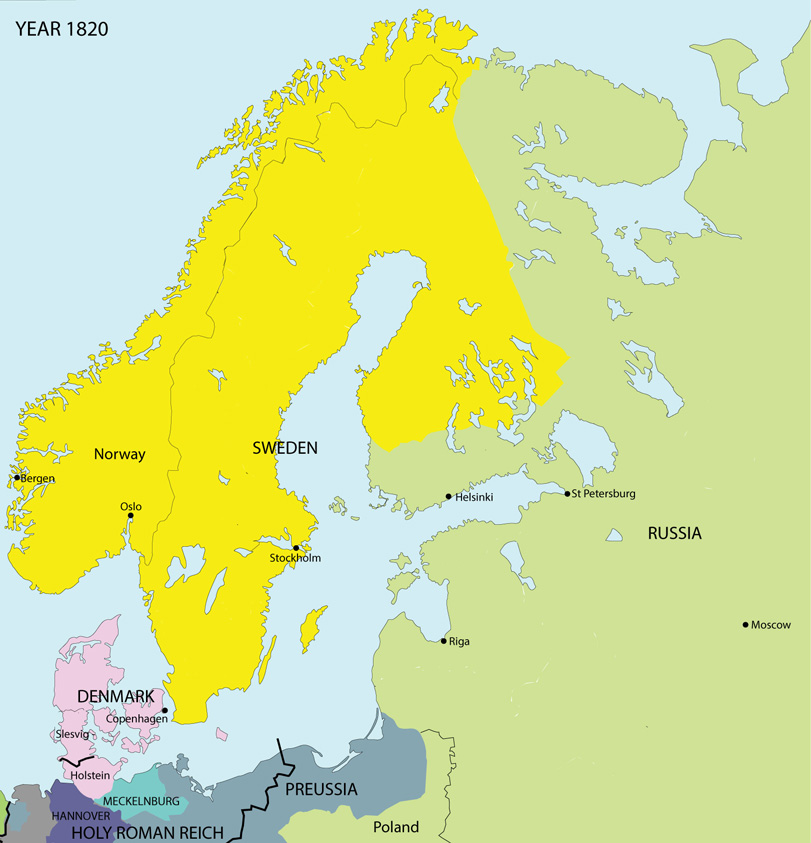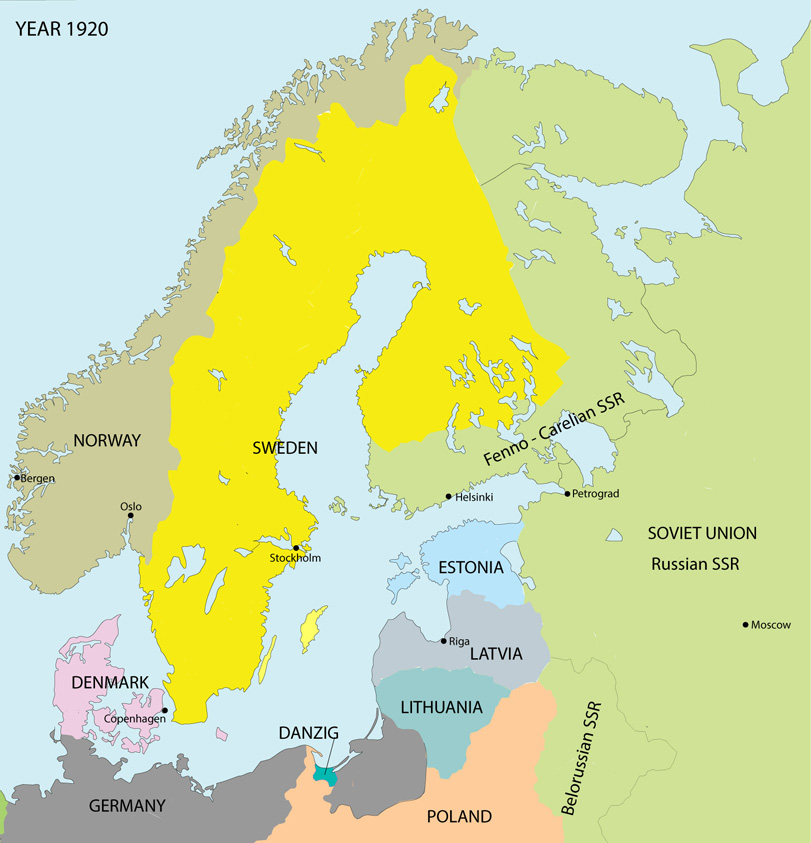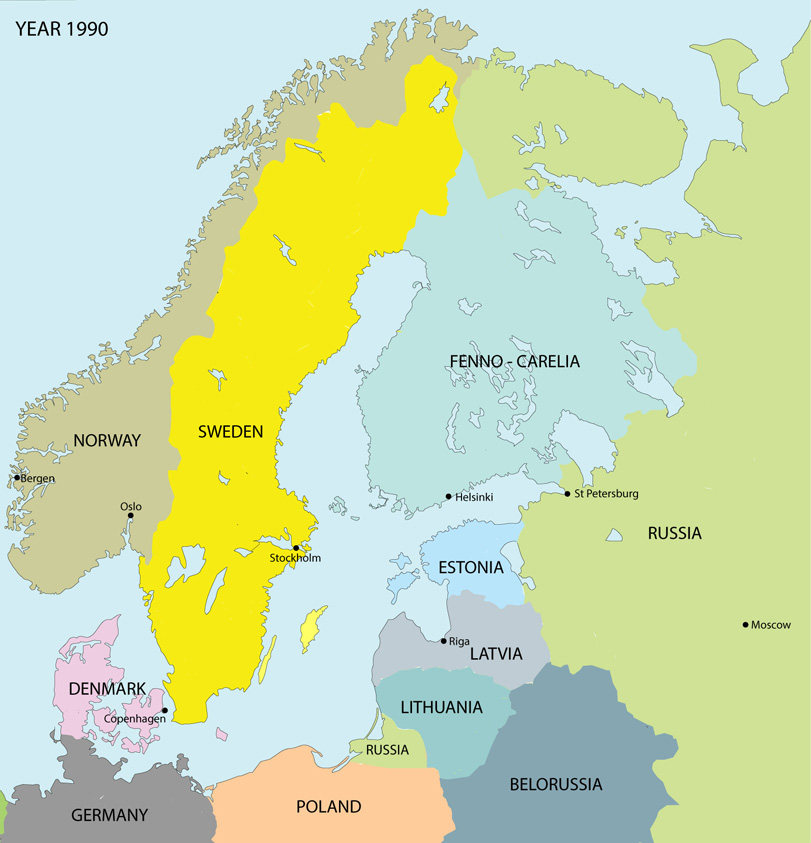







| Navigate | ||
| 1800 | ||
| 1820 | ||
| 1905 | ||
| 1920 | ||
| 1940 | ||
| 1950 | ||
| 1990 | ||
| Change history: | ||
| Sweden total Victory at GNW | ||
| Sweden total Lost at GNW | ||
| Sweden without mines | ||
| Intro |
Year 1800
The fortress Sveaborg, one of Europe's strongest fortresses, considered by Russia to threaten St. Petersburg in a world where Napoelon and France is begining to conquer Europe.
| Year 1820 The Russians siege Sveaborg but it never surrender. An early peace is desirable for the Russians. Their goal is the control of the Gulf of Finland. The Swedish king Gustav IV Adolf was dethroned by the generals who realized they could not defeat the Russians.
|
Year 1905 The Russians did sought for a more natural border in the north, but after the loss at the Crimea War they gave up those ambitions.
|
Year 1920 In Finland, both nationalist- (the Whites) and revolutionary- (the reds) movements was strong but it was split between the Russians and Swedish parts. The Whites in the south did never get the strong support from northern Finland and lost the civil war to the Red side which was strong in Southern Finland. They eventually formed a Finnish-Soviet Soviet republic. The merger with Carelia was a Soviet ambition to include all Finnish-speaking population in the USSR.
|
| Year 1940 The Soviet Union and Nazi Germany shared Northen Europe. Sweden was diveded between Germany and Soviet Union. Kemi River became the border. The eastern part was supplied to the Fenno-Carelian Soviet Republic. |
| Year 1950 The Soviet Union kept the occupied eastern part of Sweden in the increased Fenno-Carelian republic. Soviet also incorporated the Baltic states and eastern Poland. Poland obtaining parts of Germany. Germany was divided into a West (BRD)- and East Germany (DDR). |
| Year 1990 The Soviet Union was demolished and the republics become independent states. Fenno-Carelia became a major country in the northern Europe, but it has a Russian minority which has became a tool for Nationalism Russian policy. |
Sveaborg never surrendered
|
|